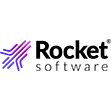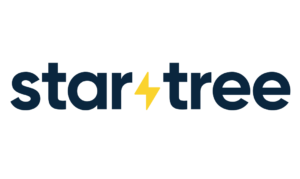

Shutterstock
Big data startup StarTree unveiled new enhancements to its platform on Wednesday, designed to improve AI-driven decision-making for enterprises.
The company has launched AI-native features, including Model Context Protocol (MCP) and Vector Auto Embedding, while also making its Bring Your Own Kubernetes (BYOK) deployment model generally available.
StarTree is known for its real-time analytics platform built on Apache Pinot – an open-source, distributed OLAP data store optimized for ultra-low-latency queries. Its technology enables enterprises to process vast streams of dynamic data, delivering AI-powered insights, anomaly detection, and interactive dashboards to support real-time operational decision-making.
As AI adoption accelerates, traditional analytic systems designed for human review are proving too slow. Businesses increasingly require AI-native architectures capable of handling real-time data streams for autonomous decision-making.
The introduction of the MCP provides a standardized way for AI applications to interact with external live data sources and tools, ensuring that decisions are made with the most current context available. Originally developed by Anthropic to help applications provide context to LLMs, MCP allows these models to pull real-time insights from StarTree, giving them the ability to act beyond their original training. The feature is expected to launch in June 2025.
 While the MCP feature is primarily aimed at facilitating developers, it also has the potential to improve AI-driven applications by making integrations more scalable, efficient, and adaptable across various platforms. A key benefit of MCP is that it adds some muscle to conversational querying in real-time. This means that users can ask follow-up questions without restating the full context, and the AI can still deliver accurate, real-time answers
While the MCP feature is primarily aimed at facilitating developers, it also has the potential to improve AI-driven applications by making integrations more scalable, efficient, and adaptable across various platforms. A key benefit of MCP is that it adds some muscle to conversational querying in real-time. This means that users can ask follow-up questions without restating the full context, and the AI can still deliver accurate, real-time answers
The other new feature, the Vector Auto Embedding, is designed to optimize the transformation of vast streams of raw, dynamic data into actionable intelligence, simplifying real-time retrieval-augmented generation (RAG). The feature enables pluggable vector embedding models, streamlining the continuous flow of data from source to embedding creation to ingestion.
According to StarTree, this approach makes deploying Retrieval-Augmented Generation pipelines easier by reducing complexity and eliminating stitched-together workflows. The company also claims that these innovations minimize latency and enhance the responsiveness of autonomous agents in high-speed environments. Vector Auto Embedding is expected to be available by Fall 2025.
These combined capabilities enable StarTree to power agentic AI applications, facilitate RAG, and support natural language querying of live data with immediate context.
“The next wave of AI innovation will be driven by real-time context—understanding what’s happening now,” said Kishore Gopalakrishna, Co-founder and CEO of StarTree. “StarTree’s heritage as a real-time analytics foundation perfectly complements where AI is going by delivering fresh insights at scale. What is changing is the shift from apps as the consumer to autonomous agents.”
The new Bring Your Own Kubernetes (BYOK) offers greater control to developers over StarTree within Kubernetes environments, regardless of whether it is in the cloud, on-premises, or hybrid architectures.
This feature is especially useful for companies that handle sensitive data, as it allows them to meet strict security and compliance requirements within their own tech environment. It’s also a cost-effective solution for companies with predictable and stable workloads, helping them reduce expenses on compute and usage fees.
“Real-time insights are no longer optional, but too often, enterprises are blocked by infrastructure constraints,” said Gopalakrishna. “With BYOK, we remove those barriers. Companies can now deploy StarTree wherever they need it, without compromising on performance, security, or cost control.”
The BYOK feature, now available in preview, adds more flexibility to StarTree’s offerings. The startup already provides a fully managed SaaS service, where StarTree handles hosting for users, as well as the Bring Your Own Cloud (BYOC) option, which lets users select their preferred cloud while StarTree manages the deployment. Now with BYOK, users can host and manage everything themselves.
StarTree, headquartered in Mountain View, CA, was founded in 2018 by Kishore Gopalakrishna and Xiang Fu. Both the founders were involved in the development of Apache Pinot while working at LinkedIn. Frustrated by the inefficiencies in real-time analytics that slowed workflows, Gopalakrishna and Fu set out to create a purpose-built platform that could deliver real-time, high-concurrency analytics at scale.
Their vision led to the founding of StarTree, which has raised a total of around $ 75 million in funding. The growth-phase company claims its platform ingests 1.1 million events per second while serving 1.19 billion queries per week. It helps businesses like Stripe, Uber, DoorDash, and Zomato in delivering real-time, user-facing analytics at scale.
Related Items
Unpacking How Enterprises Can Source and Utilize Synthetic Data for AI
Event Store Changes Name to Kurrent, Raises $12M to Unify Streams and Databases
Demystifying AI: What Every Business Leader Needs to Know
August 1, 2025
- MIT: New Algorithms Enable Efficient Machine Learning with Symmetric Data
- Micron Expands Storage Portfolio with PCIe Gen6 and 122TB SSDs for AI Workloads
- DataRobot Announces Agent Workforce Platform Built with NVIDIA
- Menlo Ventures Report: Enterprise LLM Spend Reaches $8.4B as Anthropic Overtakes OpenAI
- Confluent Announces $200M Investment Across Its Global Partner Ecosystem
- Zilliz Sets New Industry Standard with VDBBench 1.0 for Benchmarking Real Vector Database Production Workloads
- Symmetry Systems CSO Releases Book on Data Security Strategies for the AI Era
July 31, 2025
- Google DeepMind’s AlphaEarth Model Aims to Transform Climate and Land Monitoring
- Elsevier Launches Reaxys AI Search for Natural Language Chemistry Queries
- Boomi Brings Sovereign Data Integration to Australia
- Scality Releases Open Source COSI and CSI Drivers to Streamline File Storage Provisioning
- Informatica Boosts AI Capabilities with Latest Intelligent Data Management Cloud Platform Release
- Helix 2.0 Gives Global Enterprises the Fastest Path to AI Agents on a Private GenAI Stack
- Anaconda Raises Over $150M in Series C Funding to Power AI for the Enterprise
- Supermicro Open Storage Summit Showcases the Impact of AI Workloads on Storage
- Observe Closes $156M Series C as Enterprises Shift to AI-Powered Observability at Scale
- Stack Overflow’s 2025 Developer Survey Reveals Trust in AI at an All Time Low
July 30, 2025
- Scaling the Knowledge Graph Behind Wikipedia
- LinkedIn Introduces Northguard, Its Replacement for Kafka
- Rethinking Risk: The Role of Selective Retrieval in Data Lake Strategies
- Top 10 Big Data Technologies to Watch in the Second Half of 2025
- What Are Reasoning Models and Why You Should Care
- Apache Sedona: Putting the ‘Where’ In Big Data
- Rethinking AI-Ready Data with Semantic Layers
- What Is MosaicML, and Why Is Databricks Buying It For $1.3B?
- Top-Down or Bottom-Up Data Model Design: Which is Best?
- LakeFS Nabs $20M to Build ‘Git for Big Data’
- More Features…
- Supabase’s $200M Raise Signals Big Ambitions
- Mathematica Helps Crack Zodiac Killer’s Code
- Promethium Wants to Make Self Service Data Work at AI Scale
- Solidigm Celebrates World’s Largest SSD with ‘122 Day’
- AI Is Making Us Dumber, MIT Researchers Find
- The Top Five Data Labeling Firms According to Everest Group
- Toloka Expands Data Labeling Service
- With $20M in Seed Funding, Datafy Advances Autonomous Cloud Storage Optimization
- Ryft Raises $8M to Help Companies Manage Their Own Data Without Relying on Vendors
- AWS Launches S3 Vectors
- More News In Brief…
- Seagate Unveils IronWolf Pro 24TB Hard Drive for SMBs and Enterprises
- Gartner Predicts 40% of Generative AI Solutions Will Be Multimodal By 2027
- OpenText Launches Cloud Editions 25.3 with AI, Cloud, and Cybersecurity Enhancements
- TigerGraph Secures Strategic Investment to Advance Enterprise AI and Graph Analytics
- Promethium Introduces 1st Agentic Platform Purpose-Built to Deliver Self-Service Data at AI Scale
- StarTree Adds Real-Time Iceberg Support for AI and Customer Apps
- Gathr.ai Unveils Data Warehouse Intelligence
- Databricks Announces Data Intelligence Platform for Communications
- Graphwise Launches GraphDB 11 to Bridge LLMs and Enterprise Knowledge Graphs
- Data Squared Announces Strategic Partnership with Neo4j to Accelerate AI-Powered Insights for Government Customers
- More This Just In…




























